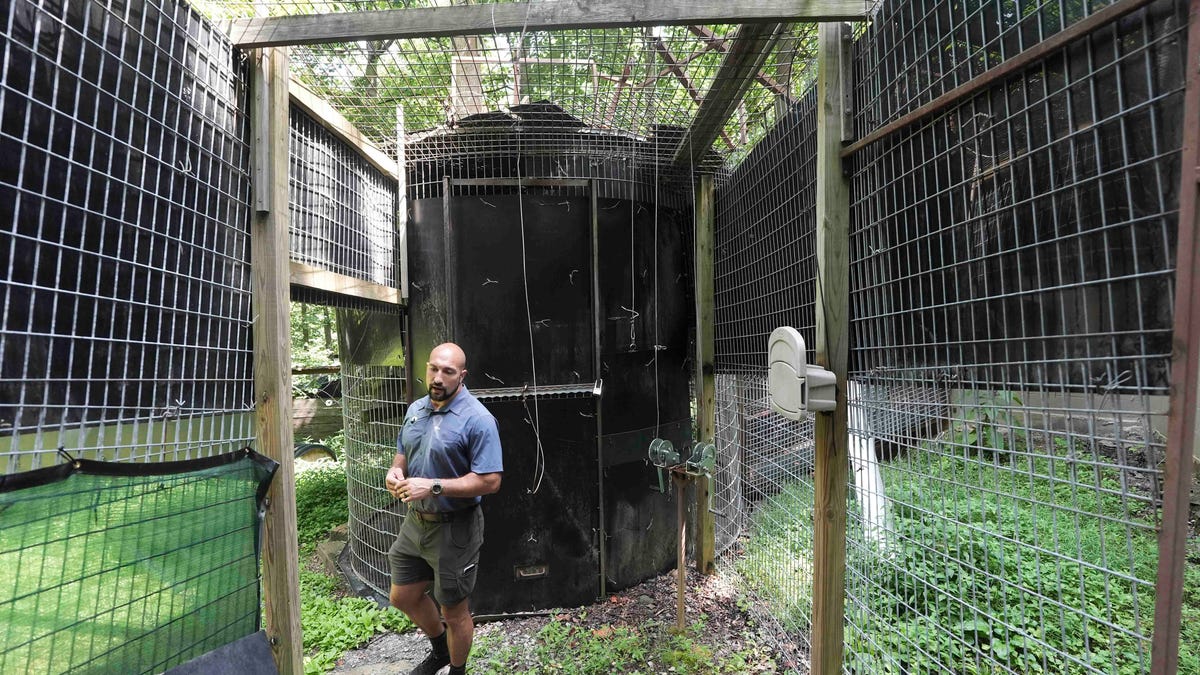Appalachian Bear Rescue is taking initial steps to overcome a big hurdle the state has put in place for it to once again safety rehabilitate bears.
Before April, the bear rescue facility received injured bears and orphaned cubs through the Tennessee Wildlife Resources Agency. However, following numerous pneumonia deaths and associated euthanasia cases, the agency stopped sending animals to the center.
In 2023 and 2024, 16 bears either died from pneumonia or were killed at the Townsend facility, according to a TWRA news release.
Now, the rehabilitation center is working to restore its relationship with TWRA. But it’s a slow and costly process. Appalachian Bear Rescue is upgrading its facilities and outdoor bear enclosure to meet the state’s health and habitat requirements.
Appalachian Bear Rescue paid $50,000 for updates and has spent around $200,000 in staff costs since its shutdown in April, according to Interim Executive Director Greg Grieco. That money paid for infrastructure improvements to create a safer habitat for the bears.
One of the major upgrades is a new EcoWater softening system, donated by Advanced Water Systems of East Tennessee and valued at $30,000. The water softening systems will treat water with a small amount of chlorine to help prevent future disease outbreaks.
When could the Appalachian Bear Rescue reopen with bears?
Despite the rescue’s efforts, the rehabilitation center still doesn’t have bears. The nonprofit will not be able to receive any animals until it signs a contract with TWRA that outlines strict regulations for biosecurity measures and best practices, among other stipulations.
A draft contract is pending between the organizations, Grieco said. This would be the first written agreement between them.
“Any longtime, informal or unwritten agreement is an area that likely needs to be formalized,” Tennessee Wildlife Resources Agency spokesperson Chelsey Sexton said in an email. “A written agreement is not only in the best interest of the TWRA and ABR, but most importantly, it’s in the best interest of Tennessee’s wild bear populations, which ABR has been a diligent partner in helping sustain and grow.”
The contract would set a high barrier to allow bears into the facility, and significantly reduce the maximum capacity of the rehabilitation facility.
“The agreement is the only way to get back to rehabbing cubs,” Grieco said.
One thing is certain: it won’t happen immediately.
There are two ways bears can return to the Townsend facility, according to Grieco. The rescue could conduct a comprehensive soil sample test of its existing outdoor enclosures, which would prove the area is safe and healthy for cubs.
Appalachian Bear Rescue would conduct the soil test in-house and send the results to the government agency. That process could take up to six months to complete, Grieco said.
Alternatively, Appalachian Bear Rescue could build a brand-new enclosure for the bears. That could cost around half a million dollars to pay for dirt, trees and a fortified two-layered chain-link fence to keep the bears inside, according to Grieco.
Appalachian Bear Rescue’s capacity reduced by two-thirds
If and when Appalachian Bear Rescue does get bears, it won’t be able to accept as many as before. The agreement with TWRA would reduce the amount by more than two-thirds.
“Some people may not like that we won’t get as many cubs, but it’s for the best,” Grieco said.
Before the shutdown, the rescue could accept up to 10 bears per half-acre. If the contract is signed, the facility will accept up to six bears per half-acre. However, the facility will leave two half-acre plots empty ‒ another effort to reduce disease.
The bears will rotate to the empty half-acre plot every two weeks, according to Grieco.
